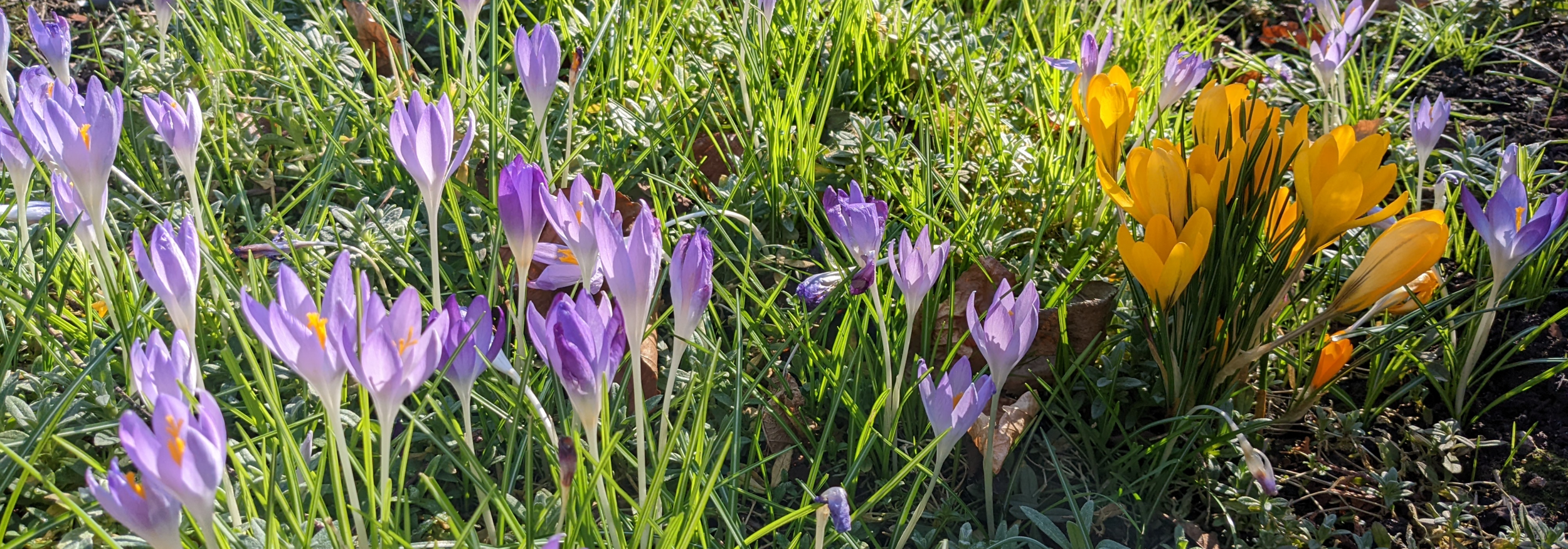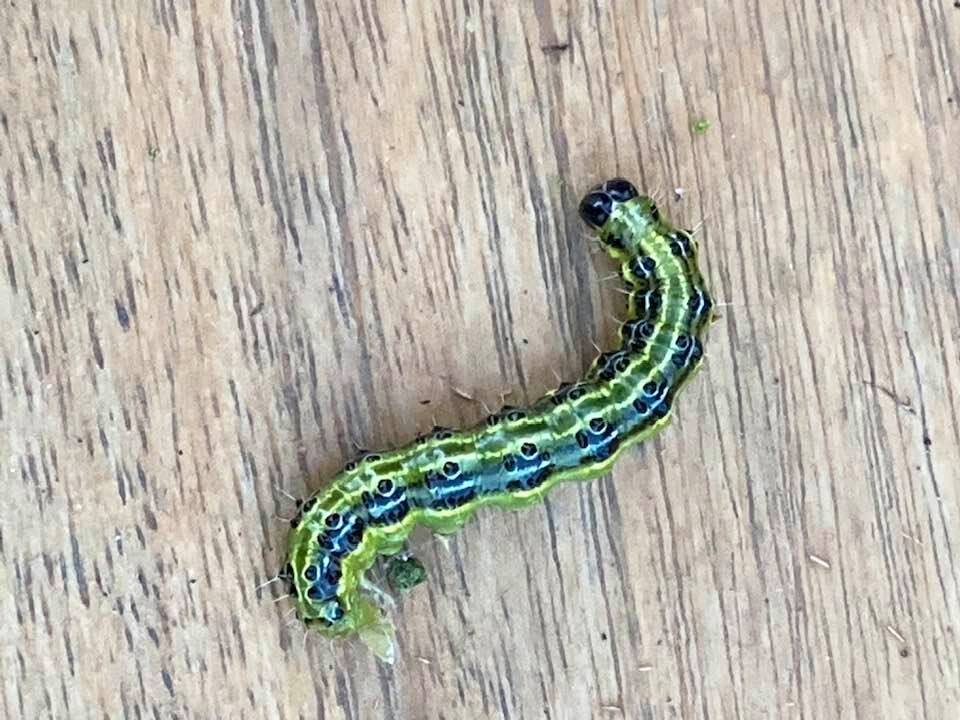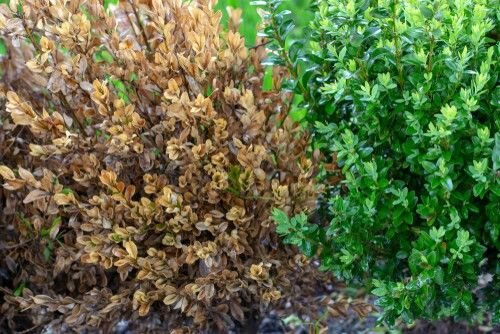Box
/Box moth webbing
After this difficult spring, at last June has bought with it better weather. If plants were held back by cold and/or drought and excessive rainfall, they now have a chance to catch up. Looking out into the garden yesterday, everything looked green and lush – the May rains certainly encouraged fast and whippy growth – except one box plant which was noticeably brown. Further investigation revealed the culprit, the box tree moth caterpillar (Cydalima perspectalis), or rather hundreds of them eating the leaves within a mass of dirty white webbing. I suspect they are lurking in other spots too.
The box tree moth is one reason why box has had a downturn in popularity over the last few years, the other being the fungal disease box blight (Cylindrocldium buxicola), which causes die back and can kill young plants. Both these cause heart palpitations in many gardeners and a number of gardens have experimented with alternative planting.
Bridge End Gardens
However, box, which is native to Europe, has been cultivated for millennia, for decorative purposes but also for its practical uses. We see it in many gardens as topiary and for hedging, but it was once valued as a treatment for malaria and was highly sought after for furniture making. Slow growing, small leaved and evergreen and so easy to shape, it is invaluable in formal gardens. The scent is not to everyone’s liking. The herbalist John Gerard described it as "evill and lothsome" whilst Daniel Defoe wrote that Queen Anne had the box hedging removed from the formal gardens at Hampton Court Palace because of its offensive odour! Despite that, here in Essex we have many gardens where it is an integral part of the design. Part of the knot garden at Cressing is formed of box hedging, as is much of the Dutch garden at Bridge End Gardens and at Copped Hall there are a number of box hedges in the walled garden. Seemingly random box plants in older gardens could give a clue to previous designs, in our garden there are a few large and unruly specimens which hint that once parts of it were more formal than they are today.
Box moth Caterpillars
As box has obviously been cultivated here for many years and suits a Tudor house, I want to keep our box balls, hedges and all the plants scattered around the garden – none of the latter seem to suffer from anything, possibly because they are never pruned – despite the possible challenges. In addition, once pruned (2 times a year at least, late May to early June and late August to early September with a couple of trims between if you want to keep the plant remains neat and dense, though that may be a disadvantage in controlling both blight and the moth) it gives a formal structure to the garden without resort to hard landscaping.
There are treatments and ways of managing blight and the caterpillars. A quick search on line reveals many pages of suggestions. One interesting solution is to encourage jackdaws, they have been spotted picking off the box tree moth caterpillars at Ham House in Richmond. See here for details on that. Unfortunately I will have to resort to other methods...
Box moth caterpillar, box blight and healthy box.
Images: All author’s own except: Bridge End Gardens, Visit Essex. Box blight, Pyracantha.co.uk.







